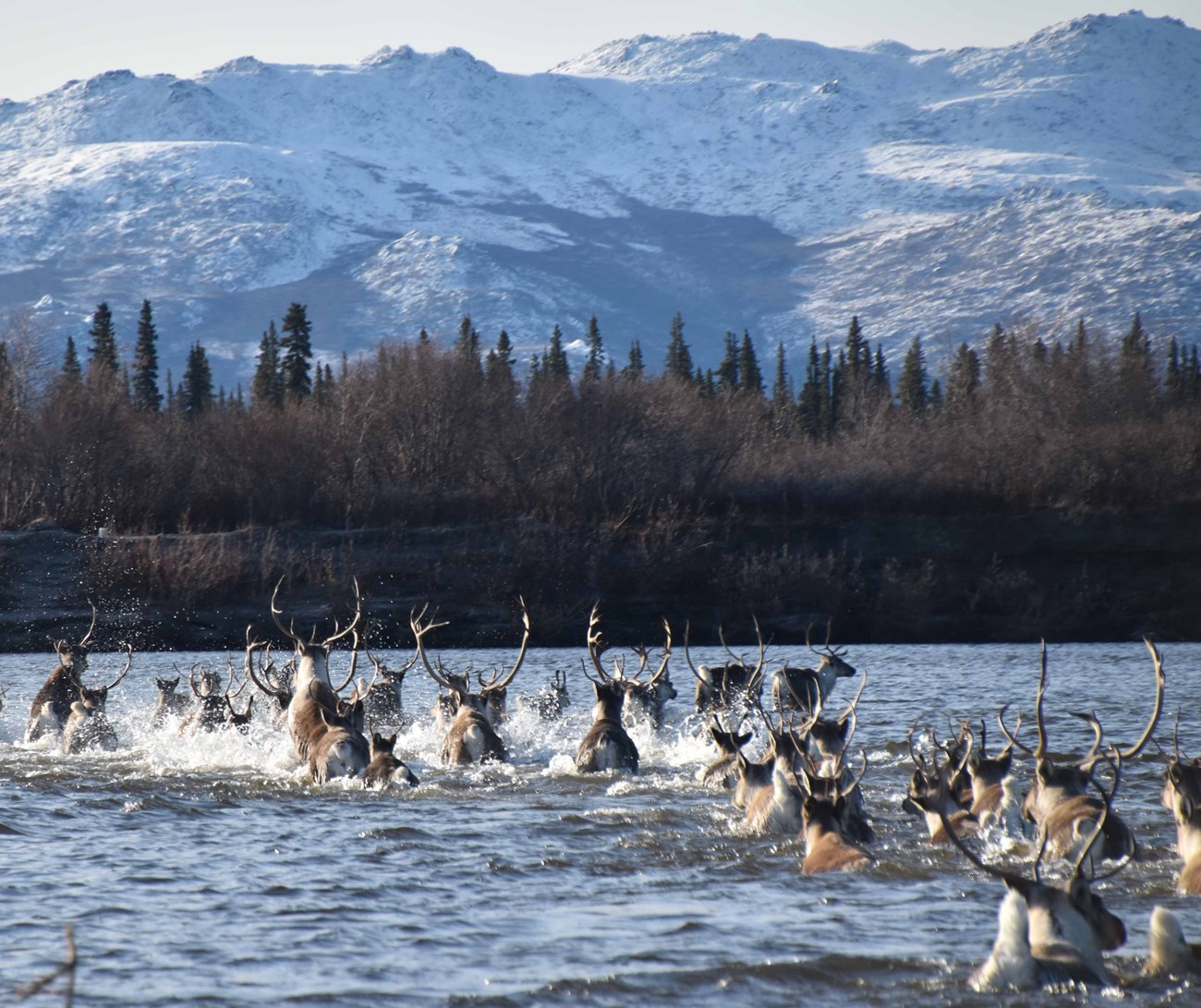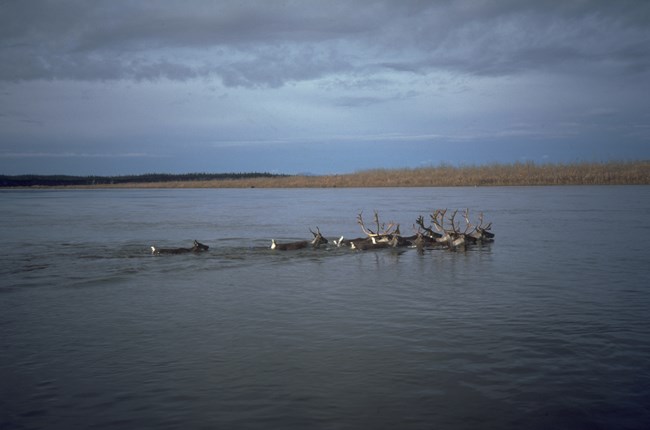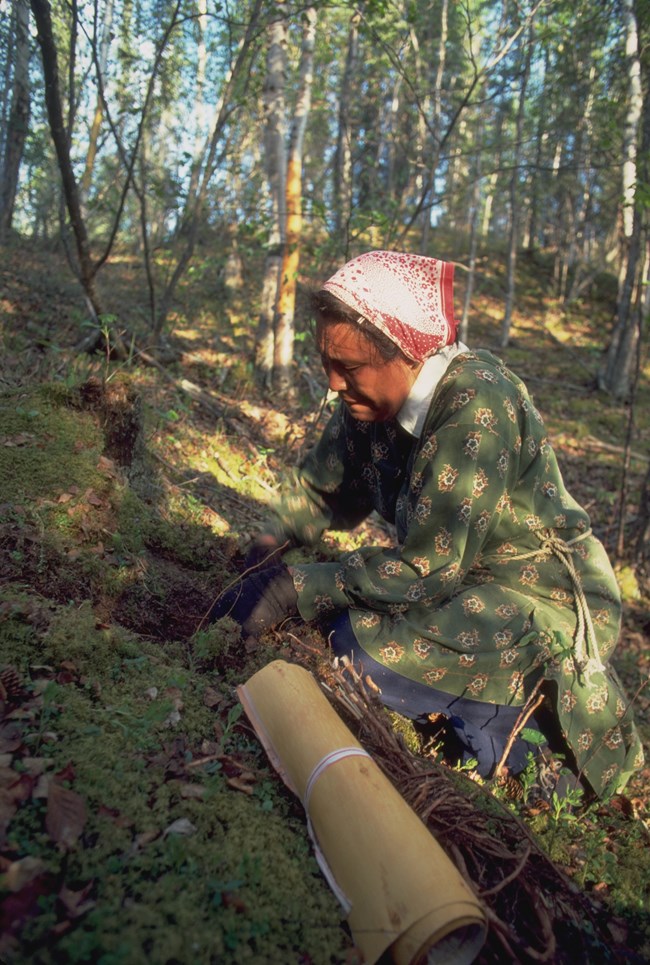
NPS Photo/Kyle Joly “I always remember what my grandparents told me about animals. You should not waste them… get only what you need, can eat and use. If we do that, we will have a long life.” – Lulu Foxglove, Selawik, AlaskaKuuvaŋmiut SubsistenceFrom time immemorial, the Iñupiaq of Northwest Alaska have made a thriving home in the arctic. The entire ecosystem: sky, sea, and land not only sustain physical needs but also spiritual and cultural needs. The mighty caribou herd and salmon runs continue to provide enough food for people to see their dogs and themelves through the long, lean months of winter. Skins provided warmth for parkas and mukluks. For generations going back at least 9,000 years, the Iñupiat (real people) have hunted moose, caribou, bear, wolf and wolverine from wooden sleds pulled by teams of domesticated dogs and weathered the harsh Arctic winters in parkas made of caribou hide. Food was stored in baskets made from willow and birch, and during the dark days of winter, stone lamps full of caribou tallow or seal oil provided the only light. Today subsistence activities remain much the same. Most people now reside in permanent villages but continue to spend time at seasonal camps and use snowmachines, motorboats and other equipment to fulfill their subsistence needs. Still, the far north remains a land of plenty. The first Americans from the lower 48 did not venture up the Kobuk River until 1850, and when they arrived they greatly impacted populations of many species of animals. These drops in population brought about regulatory seasons and bag limits. Despite many changes to both society and ecosystem in a few short generations, subsistence – defined as noncommercial, customary, and traditional use of wild resources – remains an important part of Iñupiaq culture and Kobuk Valley National Park today. As river people, land mammals and fish are staples for the Kuuvaŋmiut (People of the Kobuk River), though trade with coastal communities is common. 
NPS Photo Subsistence is more than hunting for recreation, or even food. The gathering and hunting of animals and plants is done with great respect as it fulfills cultural and spiritual needs as well as physical.

NPS Photo Seasonal Use
|
Last updated: August 4, 2023
